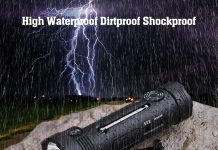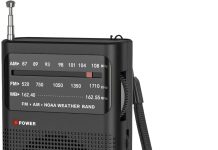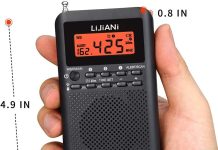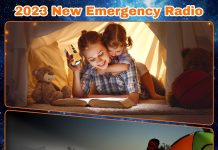Imagine this scenario: you’re sitting at home, when suddenly, a loud alarm rings out, accompanied by an urgent voice urging you to take cover immediately due to an incoming severe weather event. In situations like these, knowing the specifics of the threat at hand can be crucial for your safety. This is where SAME technology comes in. SAME, which stands for Specific Area Message Encoding, is a revolutionary feature found on many emergency weather radios. But what exactly is SAME technology and how does it work? Let’s uncover the mystery behind this life-saving technology.
Review contents
What is SAME Technology on an Emergency Weather Radio?
Have you ever wondered what SAME technology is on an emergency weather radio? You may have come across this term but have not fully understood its significance. Well, fear not! In this article, we will delve into the world of SAME technology and explore its function, purpose, and benefits. So sit back, relax, and let us demystify SAME technology for you.
Definition of SAME Technology
SAME technology, which stands for Specific Area Message Encoding, is a feature found on many emergency weather radios. It is a protocol used to enhance weather alerts by targeting specific areas affected by severe weather conditions. Through SAME technology, weather radios can deliver tailored alerts to users based on their location, ensuring that they receive relevant and timely information in times of emergency.
Purpose of SAME Technology
The primary purpose of SAME technology is to provide individuals and communities with accurate and timely weather alerts. By relaying information on severe weather conditions, including tornadoes, hurricanes, floods, and other life-threatening events, SAME technology helps people stay informed and take necessary precautions to ensure their safety. It acts as a vital tool for emergency preparedness and disaster response.
Functionality of SAME Technology
SAME technology operates by encoding weather alerts with specific codes that correspond to pre-defined geographic areas. These codes allow weather radios to receive and recognize alerts intended for specific regions. When an alert is broadcasted, the radio compares the encoded message with its programmed codes to determine if the alert is relevant to the user’s location. If it matches, the radio sounds an alarm or activates a voice message, making the user aware of the impending weather threat.
How SAME Technology Works
SAME technology utilizes a series of codes to deliver accurate and targeted weather alerts. Each weather radio is programmed with a unique six-digit identification code that corresponds to a specific county or region. Users input their desired geographical area codes into their radios, which act as filters to ensure they only receive alerts relevant to their location. When a severe weather warning is issued, the National Weather Service transmits the alert along with the encoded SAME code. Weather radios in the affected areas then compare the received code with their programmed codes, determining if the alert should be triggered.
SAME Technology Codes
The SAME technology codes consist of six digits, which represent a wide range of regions across the United States. The first two digits represent the state or territory, followed by the three digits representing the county within that state. The last digit signifies the specific type of alarm notification, such as a watch or warning. These codes are essential for proper identification and filtering of weather alerts to the appropriate recipients.
Benefits of Using SAME Technology
Using SAME technology on an emergency weather radio offers numerous benefits. Firstly, it provides users with precise and localized weather alerts, ensuring that they receive information that directly impacts their area. This targeted approach eliminates unnecessary alarm or confusion caused by irrelevant alerts. Additionally, SAME technology allows users to customize their radios by programming their desired geographic codes, enabling them to receive alerts for multiple locations, such as their home, workplace, or vacation spot. This flexibility ensures that individuals stay informed of potential weather threats, no matter where they may be.
Another advantage of SAME technology is its time-saving nature. By filtering weather alerts based on location, users can quickly assess the severity and relevance of a warning, allowing them to take immediate action if necessary. This saves precious time during emergencies and helps minimize the potential damage or harm caused by severe weather conditions. Moreover, SAME technology promotes community awareness and preparedness, as it enables neighbors and local authorities to receive consistent alerts simultaneously, fostering a proactive response to dangerous weather events.
Limitations of SAME Technology
While SAME technology is undoubtedly beneficial, it does have certain limitations. One limitation is its reliance on a functioning and properly programmed weather radio. If the radio is not set up correctly or experiences technical issues, the effectiveness of SAME technology is compromised. Additionally, SAME technology is limited to alerting users about weather-related emergencies only. It does not provide information on other types of emergencies, such as fires, chemical spills, or civil disturbances. Therefore, it is important to have multiple sources and methods of emergency communication to ensure comprehensive coverage.
Another limitation of SAME technology is its dependency on publicly accessible weather radio broadcasts. If users are outside the range of a weather station or do not have access to a radio signal, SAME technology becomes ineffective. Furthermore, SAME technology does not guarantee that every individual within the designated region will receive the alert. It relies on individuals having a weather radio and actively monitoring it during times of hazardous weather. This highlights the importance of public education and awareness campaigns to encourage the adoption and use of weather radios equipped with SAME technology.
Compatibility of SAME Technology
The great news is that SAME technology is widely compatible with various types and brands of weather radios. Most modern weather radios are equipped with SAME technology, but it is essential to check the specifications of the particular model before purchase. Additionally, SAME technology is compatible with the Emergency Alert System (EAS), a public warning system that disseminates alerts over television, radio, and other communication platforms. This compatibility ensures that SAME technology can work in conjunction with other emergency notification systems, enhancing the overall effectiveness of emergency communications.
Availability of SAME Technology
SAME technology is readily available to the public, and weather radios equipped with this feature can be purchased online, in retail stores, or directly from manufacturers. The Federal Communications Commission (FCC) mandates that weather radios capable of receiving National Weather Service alerts must include SAME technology functionality. This ensures that individuals have access to SAME technology without any additional cost or effort.
It is important to note that SAME technology is primarily utilized in the United States. Other countries may have similar systems or technologies in place, but they may operate under different names and protocols. Therefore, individuals residing outside the United States should consult their local emergency management agencies or weather authorities to understand the specific alerting systems available in their region.
Conclusion
In conclusion, SAME technology plays a crucial role in providing accurate and targeted weather alerts to individuals and communities. By encoding weather alerts with specific region codes, SAME technology ensures that users receive alerts that directly affect their area, promoting informed decision-making and proactive responses during severe weather events. The benefits of SAME technology, including precise alerts, time-saving capabilities, and community preparedness, make it an invaluable tool for emergency preparedness.
While SAME technology does have limitations, such as reliance on functioning equipment and the availability of weather radio broadcasts, it remains a reliable and effective method of receiving vital weather information. Its compatibility with various weather radios and integration with other emergency notification systems further enhance its usefulness.
So, whether you live in a tornado-prone area or simply want to stay updated on local weather conditions, consider investing in a weather radio with SAME technology. With SAME technology on your side, you can rest assured that you will receive accurate and timely alerts, ensuring your safety and the safety of your loved ones during severe weather events.



























